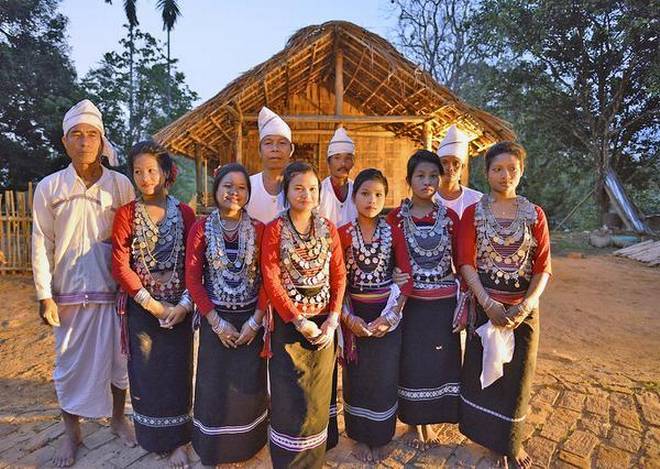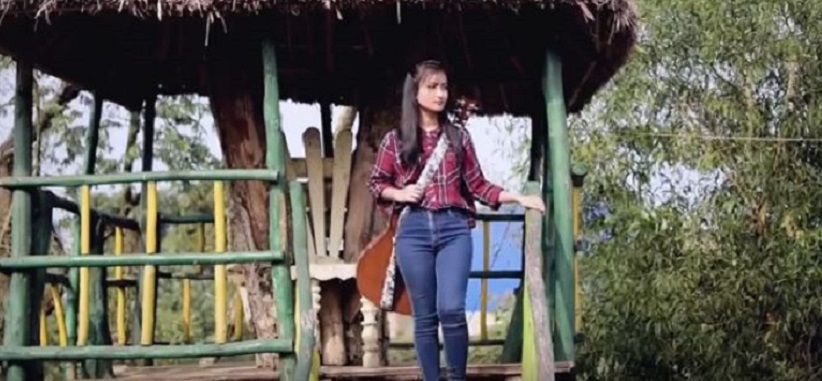Reang/ Bru
This is a collection of articles archived for the excellence of their content. |
Contents |
Introduction
Shiv Sahay Singh, May 27, 2017: The Hindu

From: Shiv Sahay Singh, May 27, 2017: The Hindu
More than 100 km from the Tripura’s capital of Agartala, at the Karnamanipara village in Dhalai district, Chandirung and Phitarung are the only women who can be spotted wearing traditional Reang jewellery called lukoih (a unique necklace made of colourful beads) and rangbauh (a necklace made of coins).
The author, a Professor of history at Tripura University, who himself belongs to the Reang community, has collected field data from 189 Reang-inhabited village councils/gram panchayats covering 28 blocks from six out of the eight districts of Tripura (2017).
“Members of the Reang tribe are generally known to be shy and hardly ever depart from their traditional way of life. Till a few decades ago, they did not mix with people of other communities. However, over the past few years, changes have slowly started creeping into their way of life. Documenting and preserving the centuries-old heritage becomes all the more important,” Professor Reang said.
Culture
Traditional
Manindra Reang, State Minister for Tribal Welfare, said that a museum dedicated to the culture of the Reang tribe is being set up at the office of the department in the Gorkha Basti area of Agartala. The museum seeks to showcase cultural aspects of Reang life in attire, ornaments, dance and rituals.
Reang millennials
See graphic, Hamjakma Reang is a pop singer and guitarist who, inert alia, sings Hindi-Urdu and Punjabi songs.
Dance
One of the unique dances of the Reang is the Hodaigiri/Hojagiri, in which a group of women balance themselves on earthen pitchers and manage other props. The performance is associated with the harvest.
Education
Data from the field
One of the concerns highlighted in the publication by Professor Reang is the limited access to education.
“Our survey revealed that the educational profile of children between the age group of 6-14 years was not satisfactory. Out of 45,532 children in this age group, 40.9% boys and 38.6% girls are not in school,” he said.
Education has been pressing a concern for the tribe. As per the 2001 census, 66.93% of the Reang population is illiterate.
Language
The Reang dialect is of Tibetan-Burmese origin and is locally referred to as Kau Bru. Though there is no script for the language, some publications follow the Bengali or Roman script to keep the language alive.
Occupation
Jhum cultivation
Traditionally, jhum (shifting) cultivation has been one of the primary agricultural activities of the Reang tribe. However, with land rights being granted, many members of the community have taken to ploughing or settled cultivation.
“In terms of agriculture, the survey revealed that only 13.8% members of the community are practising shifting cultivation while 35.2% are engaged in settled agriculture. About 13.1% of the tribe depend on the collection of minor forest produce for their livelihood while 19.8% are agricultural labours,” Professor Reang said.
